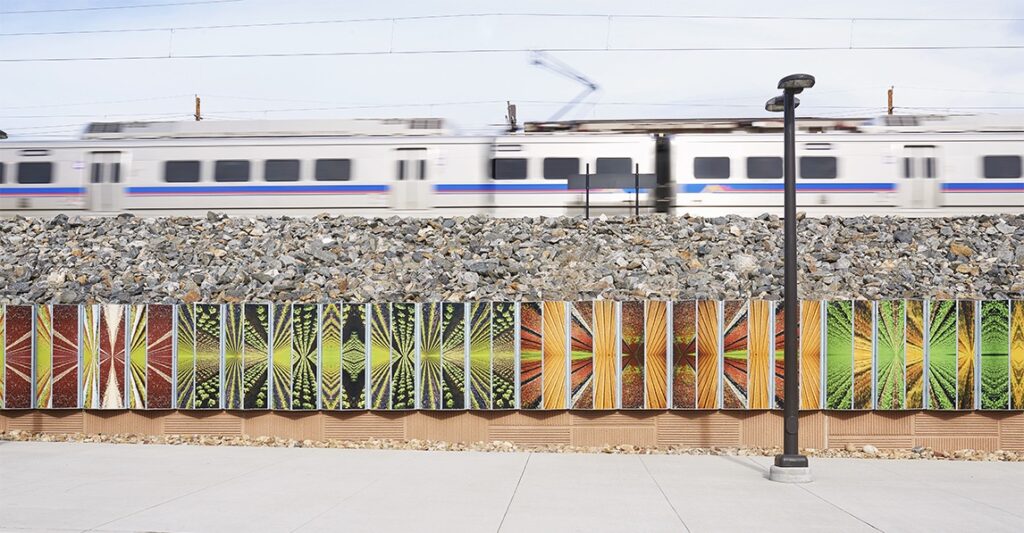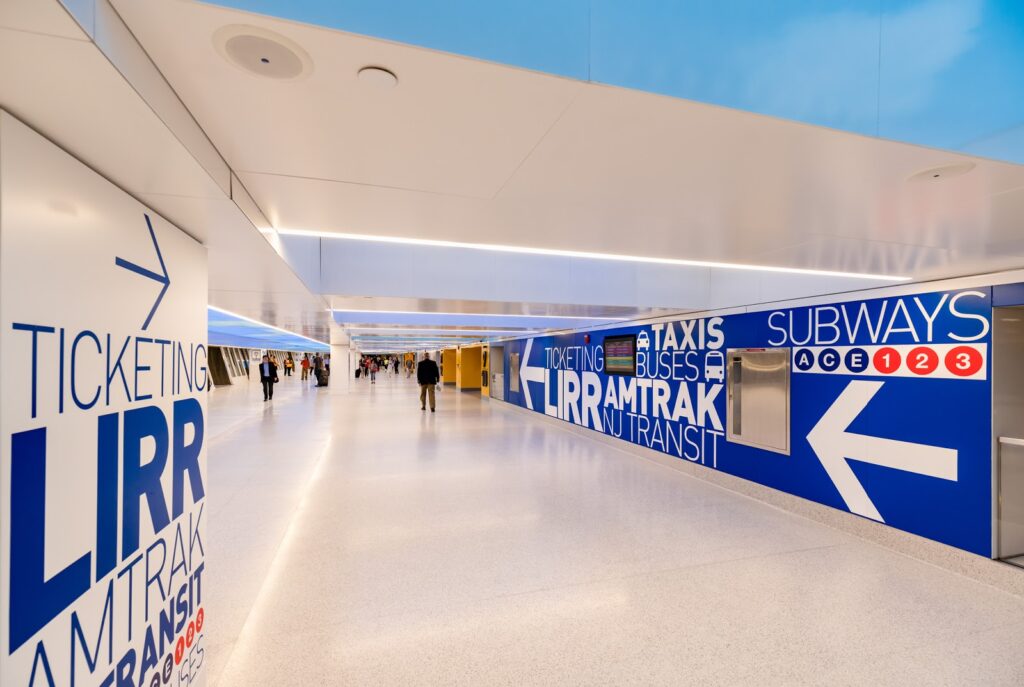What if the natural vibrancy of our surroundings is our most easily accessible source of joy? This is a question Ingrid Fetell Lee proposes in her recent book, Joyful: The Surprising Power of Ordinary Things to Create Extraordinary Happiness. Lee’s quest to find out exactly what joy is and how it manifests within all of us lead her around the world to places where she discovered what she calls the “aesthetics of joy.” There were many elements that caught Lee’s attention during her travels — bright colors, patterns and objects with curved contours to name a few. These qualities that bring us visual and tactile joy can be applied to urban design and public spaces, drawing people together to share in moments of happiness and community.
1. Bright colors feel safe: Color psychology has long been used in marketing and design to evoke specific emotions in consumers, but personal preferences, experiences and cultural differences make it impossible to say that one color directly translates to one emotion for all of us. However, research by Lee does show that vibrant colors bring joy to humans, and she ties back to the significant role color played in our evolution. Bright colors signified life was thriving to our nomadic ancestors, signaling that the environment was safe. This relationship between bright, vibrant colors and a feeling of safety continues today, making joyful colors like yellow, blue, orange and turquoise wise choices to make a public space more appealing.
2. Color can reduce crime: If bright colors make us feel safe, it makes sense that colorful environments see less crime. Lee provides two proof points of this idea in her book. The Albanian city of Tirana, at one time plagued by crime and decay, is now a bustling city where residents feel safe. How did the city make such a dramatic turn-around in four years? With a small budget, the mayor began painting buildings in bright hues, hoping to infuse life back into the neighborhoods. As the buildings became a bright light of hope for citizens, crime and drug use greatly decreased.
Publicolor is a nonprofit based in New York City that engages high-risk students in painting under-resourced schools and community sites with bright colors. Since its start in 1996, Publicolor students and volunteers have painted almost 500 NYC schools and public spaces. Once Publicolor paints a school, attendance and graduation rates increase while crime on campus decreases.
3. Art creates community: Public art transforms a public space into a destination. A mural or a sculpture is a place where community members can go to meet and spend time together. Researcher Harriet Hawkins notes that public art can convey symbolism which can lead to community involvement. Symbols have the power to bring people together; consider the fact that every nation has a flag that citizens identify with. The feeling of unity that a work of art can provide can also lead to a sense of community among residents and can encourage them to support each other and their city.
4. Supergraphics: Large-scale graphics, typography and imagery that adorns walls or other large surfaces can draw people toward a public space in many ways. “It’s not about painting something a big, pretty color; it’s about actually looking at the context of the space, the issues it has and addressing them. Color and shape can completely modify a structure,” says Sean Adams, author of “The Field Guide to Supergraphics: Graphics in the Urban Environment” and co-founder of former Californian design studio AdamsMorioka, in an interview on Design Week. The article describes how supergraphics have the potential to breathe life and excitement into their surroundings. From political statements and inspiring messages to city information and wayfinding, supergraphics make public spaces pop.
5. Abundance: Use a monotone color palette and a public space can be underwhelming at best. In an article on Archinect, designer Frank H. Mahnke notes that people subjected to an under-stimulated environment show signs of restlessness, irritability and difficulties in concentration. Research by Kathie Engelbrecht, echoes Mahnke, “Humans were also found to turn inward in monotone environments, which may induce feelings of anxiety, fear and distress resulting from under stimulation. This lack of stimulation further creates a sense of restlessness, excessive emotional response, difficulty in concentration and irritation.” Stimuli in art, color and architecture bring us to life. Abundance is also an element in Lee’s aesthetics of joy, noting that items like sprinkles or confetti bring a feeling of joy to many people.
To create an appealing public space is to create a space that welcomes people, one that is joyfully stimulating and feels safe. A place that transmits a message through color and art, has the power to make it a symbol that represents a community and its citizens.


